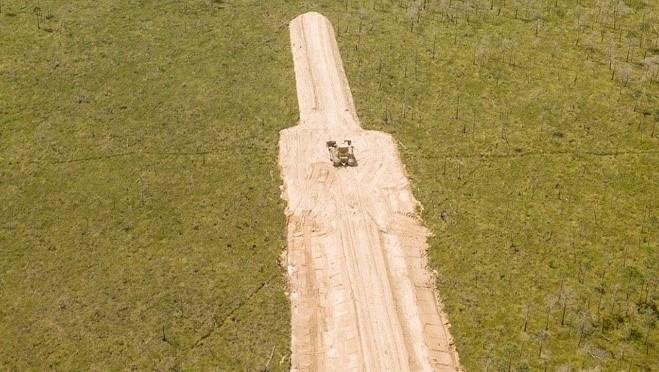In an earlier news flash Wetlands International European Association called on Belarusian authorities to stop road construction in “Almany” mires.
“Almany” is a vast complex of over 94,000 ha of natural and untouched mires and bogs preserved in natural state in southern Belarus. Together with the Ukrainian part of the area it is the largest complex of mires and bogs in Europe and the largest European Transboundary Ramsar Site. Despite international protests the construction of this road has been completed by the end of last year. The road construction is part of the Programme on forest road construction by the Ministry for forestry of the Republic of Belarus. Within this programme, another road through “Almany” is now in the planning stage. Furthermore, there is a road planned to be built in Vydritsa wetland also designated as Nature reserve and Ramsar site.
Upon the request of the RAMSAR Convention Bureau for clarification, the Belarusian authorities responded that the construction was in line with an Environmental Impact Assessment (EIA). Wetlands International and APB-BirdLife Belarus (the BirdLife International partner in Belarus) assessed a translation of the EIA and detected various flaws and unclarities.
Technical details of the planned road construction are missing in the EIA including longitudinal and transverse cross sections making it difficult to assess the impact of the planned works. It is for instance unclear how deep the peat layer will be dug out to prepare for the fundament of the road and it is therefore impossible to assess the impact of the road construction on the hydrology of the peat. Data provided by the EIA about the amount of soil that will be excavated are inconsistent. The text indicates that the road construction will have no impact on the natural dynamics of the hydrology of the area but this statement is not substantiated. On the contrary to what is stated in the EIA, recent visits to the area where the road has been constructed show that the road has had a significant impact on the hydrology and that the natural flow of water has been blocked by the road.
An assessment carried out by the APB demonstrated that about 300 ha of at least 5 habitats, protected by Belarusian national law and included into Resolution #4 of Bern convention, have been impacted.
According to the EIA the road will have various positive impacts on the biodiversity of “Almany”. The EIA refers to a significant and particular improvement of the biodiversity because of the “appearance of gravel and pebbles” which is according to the EIA good for the Western Capercaillie and the Black Grouse. Also as a result of the road construction the appearance of amphibian populations is expected in the contact zones “dryland-marsh” which will consequently improve the conditions for the globally endangered species – the Greater Spotted Eagle and Black stork. Management of this pristine wetland should however not be aimed at increasing the biodiversity by adding alien abiotic elements but at strengthening the ecological integrity and linked biodiversity of the area.
Overall the positive impacts are emphasized while negative impacts are ignored or not taken into account. The EIA does not take into consideration the fact that the introduction of linear structures brings along fragmentation of unspoiled pristine areas. Moreover, improved access will lead to more penetration of humans into areas which were difficult to access before the road was constructed causing additional disturbance and pressure. These pressures affect the general health, fertility and viability of species and compromise vital ecosystem services. Improved access leads also to higher chances of forest and peat fires because it is generally acknowledged that the majority of these fires are caused by humans. Last but not least, intensification of road traffic will lead to more disturbance of (avi)fauna and most likely more road killings of amphibians and other fauna elements.
During World Wetlands Day the head of the biology and landscape diversity department at the Ministry of Natural Resources and Environmental Protection of Belarus Nikolai Svidinsky announced at a press conference a new law on protection and use of wetlands in Belarus to be adopted in the middle of 2019. It is unclear at the moment what this means for the plans to build two more roads through two important wetlands.
For more information:
https://eng.belta.by/society/view/belarus-to-pass-wetland-law-in-mid-2019-118314-2019/
http://ptushki.org/news/652895.html
Reference:
https://europe.wetlands.org/news/ramsar-site-belarus-threatened/
